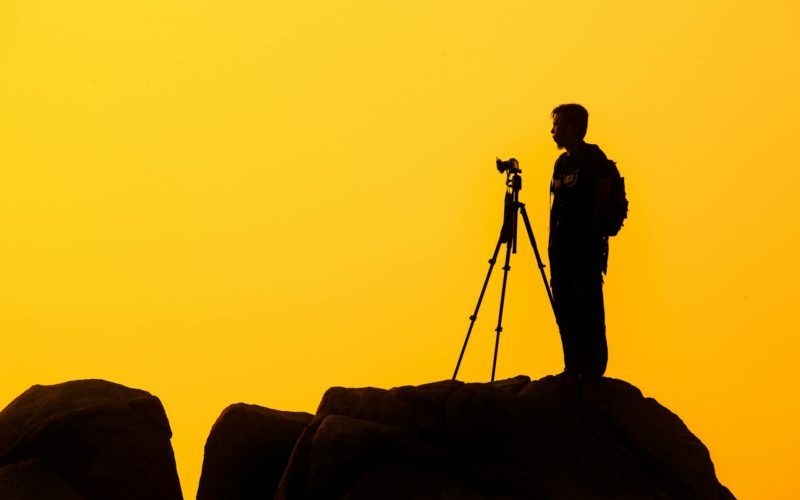Photography can be an exciting and rewarding hobby, but it can also be overwhelming for beginners. With so many settings, features, and equipment choices, it’s easy to make mistakes that can affect the quality of your photos. As a beginner, learning about common pitfalls can help you avoid them and improve your skills more quickly.
Understanding how to use your camera, selecting the right gear, and developing good habits can make a big difference in your photography journey. In this blog, we will share the top mistakes beginner photographers often make and how to avoid them, helping you start on the right path.
Ignoring Lighting Conditions
Lighting plays an instrumental role in photography, but many beginners fail to pay enough attention to it. Shooting in harsh midday sunlight can create unflattering shadows, while poor lighting can make your photos appear flat or grainy. Understanding how to work with natural and artificial light will make a significant difference in the quality of your images.
For beginners, shooting during the “golden hour,” which is the hour after sunrise or before sunset, provides soft and warm lighting that adds a pleasing effect to your photos. Overcast days are also great for photography, as the clouds act as a natural diffuser, reducing harsh shadows. Learn to adjust your camera settings based on the lighting conditions, and consider using reflectors or external flashes when needed.
Ignoring Memory Card Speed and Storage
One of the most frequent mistakes beginners make is not paying enough attention to selecting the right memory card. Many new photographers aren’t aware of how much the speed and type of memory card can influence their shooting experience, especially when taking high-quality images or videos. If you’ve ever found yourself Googling what is the fastest CFexpress card online, you’re definitely not alone—it’s a common question among beginners. CFexpress cards are known for their impressive speed, enabling photographers to capture burst shots or record 4K videos smoothly, without any lag. Their fast read and write speeds make transferring large files much more efficient.
Opting for a slower memory card can result in problems such as missed shots, delays, or even data loss, particularly when shooting in burst mode or recording high-resolution videos. Verify your camera’s compatibility before buying a memory card and choose one that fits your requirements. By recognizing the significance of memory card speed and capacity, you’ll be better prepared to capture high-quality images without any disruptions.
Overlooking the Importance of Lenses
Many new photographers focus on getting the best camera body and often overlook the role that lenses play in capturing high-quality images. The lens you use can have a huge impact on the sharpness, depth, and overall look of your photos. For example, prime lenses, which have a fixed focal length, are known for their sharpness and ability to perform well in low-light conditions. Zoom lenses, on the other hand, offer more versatility by allowing you to adjust the focal length without changing lenses.
Wide-angle lenses are great for capturing landscapes or architecture, while telephoto lenses are perfect for photographing distant subjects, such as wildlife or sports. Investing in good-quality lenses can significantly improve your photography results. It’s important to understand the different types of lenses and choose one that suits your style and shooting needs.
Not Using a Tripod When Needed
A tripod is a valuable tool that many beginners overlook, often resulting in blurry photos due to camera shake. This issue is especially common in low-light situations or when using slower shutter speeds. Handholding your camera might seem convenient, but it doesn’t provide the stability needed for capturing sharp images. A tripod offers a steady platform, allowing you to take clear and crisp shots, even in challenging lighting conditions.
Using a tripod also opens up creative possibilities, such as experimenting with long exposure photography. For example, capturing the movement of water, light trails, or night skies becomes much easier with a stable camera. Investing in a tripod is a small step that can greatly improve the quality of your photos and allow you to explore different photography techniques with confidence.
Overediting or Underediting Photos
Editing is an essential part of the photography process, but many beginners either overdo it or avoid it altogether. Overediting can result in unnatural-looking images, with colors that are too saturated or details that look artificial. On the other hand, not editing your photos at all can leave them looking flat and dull.
The key to successful editing is finding a balance. Start with basic adjustments, such as exposure, contrast, white balance, and sharpness. Gradually work on refining your editing skills as you gain more experience. Editing software like Adobe Lightroom or Photoshop offers user-friendly tools that can help you bring out the best in your photos. Remember, the goal of editing is to enhance the image while keeping it true to its original look.
Using the Wrong ISO Settings
Many beginners struggle with using the right ISO settings, which can affect the clarity and quality of their photos. ISO controls your camera’s sensitivity to light, and using a high ISO in well-lit conditions can lead to unwanted noise or grain in your images. On the flip side, setting a low ISO in low-light situations might cause your photos to be underexposed.
The key is to adjust your ISO based on the lighting conditions. Start with a low ISO (around 100-200) when shooting in bright light, and increase it as needed in dimly lit environments. As you practice, you’ll develop a better understanding of how to set your ISO correctly to capture sharp and clear photos without unnecessary noise.
Not Backing Up Photos Regularly
One of the biggest mistakes that beginner photographers make is neglecting to back up their photos. It’s easy to assume your images are safe on your memory card or computer, but technical issues or accidents can lead to the loss of your work. Regularly backing up your photos to an external hard drive or cloud storage ensures that your images are protected.
Set aside time after each photography session to organize and back up your files. Having multiple copies of your photos in different locations reduces the risk of losing them. This simple habit will save you from the heartbreak of losing valuable images and allow you to access your work whenever needed.
Conclusion
Avoiding these common mistakes will help you develop stronger photography skills and enjoy a smoother learning experience. As a beginner, it’s easy to feel overwhelmed, but understanding how to work with your camera, lighting, and editing tools will make a noticeable difference in your progress. Photography is a journey that requires patience, practice, and a willingness to learn. By being mindful of these pitfalls and taking the time to refine your techniques, you’ll build a solid foundation for capturing stunning images. The next time you pick up your camera, think about how you can apply these tips to improve your craft and tell your story through your photos.












